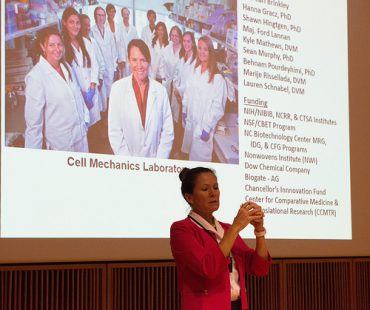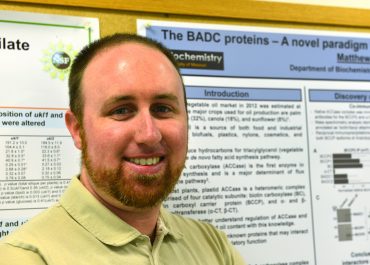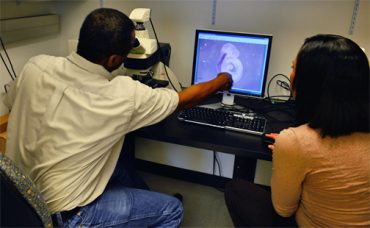science communication

Oct. 10, 2016
Expert Comment: How science made the “three-person” baby possible
Stock image via iStock By Jennifer Lu | Bond LSC A new in-vitro fertilization technique that uses genetic material from three persons made the news last week following the announcement of the successful birth of a now five-month-old baby boy. The process allowed the mother, who had a rare mitochondrial disease known as Leigh Syndrome, to have a child without passing her faulty mitochondrial genes. The nucleus from the mother’s egg was inserted into a prepared donor egg that had healthy mitochondria to make a cybrid, or cytoplasmic hybrid, egg that was then fertilized.

Sep. 16, 2016
Saturday Morning Science returns to Bond LSC
This past weekend not only ushered in Mizzou’s first home game of the season, but the return of Saturday Morning Science. The weekly lecture series connects the Columbia community with MU scientists and their research, from bio-engineering to volcanology to anthropology and linguistics. Elizabeth G. Loboa, dean of the College of Engineering, kicked off the semester with her talk on tissue engineering in the age of drug-resistant bacteria. Tissue engineering is about turning cells into tissues and organs, for example, fat-derived stem cells into muscle, bone and cartilage. The tissues take shape on tiny scaffolds that are bio-compatible…

May 8, 2015
Unlocking plants’ metabolic thermostat — award-winning LSW posters
Matthew Salie would like to see chubbier plants. “You’ve probably never really seen a fat plant before, right?” said Salie, a fourth year MU graduate student in biochemistry. “Humans, we make plenty of extra fat and store that as energy. But plants don’t really need to do that — they make just as much as they need, and that’s about it.” Salie studies plant metabolism with Bond LSC researcher Jay Thelen, an associate professor of biochemistry. He’s one of 25 winners honored for research presented during Missouri Life Sciences Week 2015. The Thelen lab looks for ways to increase the…

March 21, 2014
MU researchers find key gene in spinal locomotion, yield insight on paralysis
Samuel Waters and graduate researcher Desiré Buckley review stages of embryonic development. — BLANKENBUEHLER The difference between walking and being paralyzed could be as simple as turning a light switch on and off, a culmination of years of research shows. Recently, University of Missouri Assistant Professor of biology Samuel T. Waters isolated a coding gene that he found has profound effects on locomotion and central nervous system development. Waters’ work with gene expression in embryonic mouse tissue could shed light on paralysis and stroke and other disorders of the central nervous system, like Alzheimer’s disease. Waters…